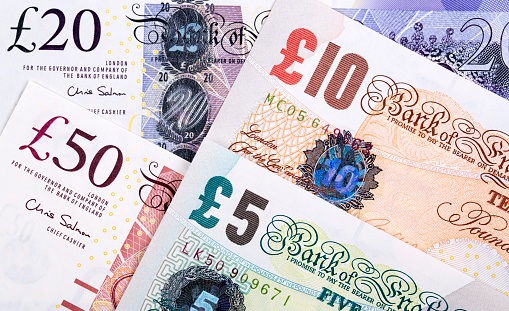If you are a trader who likes to play the range, GBPUSD has very much been your friend over the past four weeks. The pair has barely slipped below the 1.4100 level for more than a few hours and has struggled to venture beyond 1.4200 for any meaningful amount of time. Given how FX markets have largely shrugged off recent economic news and developments (like yesterday’s much hotter than expected US CPI numbers), there does seem to be a risk that “summer trading conditions” persist for some time. But that’s not to say that there are not a number of UK related fundamental themes worth watching right now. Here are four themes that could inject some volatility back into GBP pairs over the coming weeks/months.
1) Trouble bubbles over implementation of the Northern Ireland Protocol
It has been five months since the UK and EU started their post-Brexit economic relationship and trouble continues to bubble with regards to the implementation of the Northern Ireland protocol (designed to prevent the appearance of a hard border in Ireland to preserve peace in the region). As far as GBP is concerned, the specifics of the issue (most of which revolves around getting food from Great Britain into Northern Ireland) and the politics of who is right and who is wrong (the UK is accusing the EU of a lack of flexibility and the EU is accusing the UK of going against what it signed up to) matters little. What does matter is 1) the risk that the EU might impose some kind of economic sanctions on the UK in retaliation, damaging trade and the UK economy and 2) that a protracted disagreement elevates uncertainty with regards to UK/EU trade for the foreseeable future, damaging business on both sides of the English Channel (though primarily in the UK) and thus hurting trade and each sides economy. The best-case scenario for GBP in the above saga is for a deal to be quickly found and for the issue to be put to bed (perhaps the UK agrees to align with EU food standards, removing the need for border checks between Great Britain and Northern Ireland). Given the escalating rhetoric from both sides, however, that seems unlikely. This will be a theme to watch over the coming weeks.
2) Lockdown extension a threat to the economic recovery?
Another key theme to watch in the coming weeks is whether the UK’s “Freedom Day” (when Covid-19 restrictions were supposed to be largely done away with), originally scheduled for the 21st of June, is delayed and, if so, by how much. The latest reports in the financial press is that UK PM Boris Johnson is thinking about pushing back Freedom Day by four weeks to allow for more time for people to have their second Covid-19 doses – this emphasis on postponement to allow more time for second doses comes amid early evidence that one dose of the vaccines currently in use in the UK are not as effective as hoped in preventing illness from infection by the delta (India) variant of Covid-19 (two doses are still thought to be highly effective, however). Any delay will of course come as a blow to the sectors set to benefit most from lockdown easing (hospitality, tourism and entertainment). A final decision is said not to have been made yet, but the PM is expected to publicly announce his intentions on Monday.
One might immediately conclude that a postponement of Freedom Day would be a mild negative for GBP, given its negative economic implications. However, analysts have argued that if Freedom Day postponement reduces the risk of the need to lockdown again later in the summer/in early Autumn (i.e. by giving the vaccine rollout more time), then it might be a net positive – that of course assumes that markets fear the risk of another Covid-19 wave and tougher lockdowns and perceive a delay to reopening as reducing this risk. All in all, it might be quite difficult to judge GBP’s reaction function on Monday. Conversely, some have argued that the next stage of lockdown easing would not provide too material a boost to economic activity in the UK anyway, so the whole issue (and its importance to GBP) is being overblown. Still, definitely a theme to be aware of and watch next week.
3) How is the recovery going?
Aside from the fact that the UK managed to avoid an economically damaging no-deal end to the 2020 transition period out of EU membership at the turn of the year, much of GBP’s outperformance so far this year has been premised on expectations that the UK’s economic recovery from the Covid-19 pandemic in 2021 is going to outpace the majority of its developed market peers (largely due to the country’s world leading vaccine rollout). The UK entered the year under strict lockdown conditions as it was being ravaged by another wave of Covid-19 infections and these conditions only materially begun to ease at the beginning of Q2. Thus, it was always known that the economic data in Q1 wasn’t exactly going to be stellar; all in all, the economy was broadly stagnant, albeit performing a little better than expected as people/businesses showed a higher-than-expected propensity to adapt to lockdown. But now, as we approach the end of Q2, the Office for National Statistics is starting to release hard economic data for the start of Q2.
Indeed, data released from the UK’s Office for National Statistics this morning showed the pace of the UK’s economic recovery accelerating in the month of April (as expected), given that strict lockdown rules that had been in force since January were drastically eased midway through the month. The MoM rate of GDP growth for the month came in at 2.3%, a little above consensus estimates for a pace of growth of 2.2% and the fastest rate of recovery since last July. Analysts note that UK GDP still remained 3.7% below its pre-Covid-19 level in April – the hope is that this gap can be closed in the subsequent months and, indeed, GDP growth in May is also expected to be strong. Other hard data for the UK economy was also released alongside the headline GDP figures; industrial output posted a surprise 1.3% drop on the month which is being put down to oil rig maintenance and the impact of the chip shortage on car production, and construction output saw a surprise 2.0% drop on the month, though this does come after March’s much stronger than anticipated 5.8% MoM rise. Weakness in these two sectors was outweighed by strength in services output, which rose 3.4% MoM, above expectations for a 2.8% rise.
As noted above, fears about the spread of the delta (India) variant of Covid-19 could complicate things over the summer and could potentially result in the final stage of lockdown easing being delayed. Clearly then, this presents a downside risk to the economy over summer and beyond. However, most analysts remain bullish on GDP growth for the full year 2021 in the UK; indeed, the Bank of England is forecasting growth of 7.25% this year (the fastest rate of growth since 1941 when the entire British economy was dedicated to the war effort). For GBP to remain elevated and perhaps even push on to greater heights versus its US dollar and euro peers, further confirmation of the strength of the UK’s economic recovery (strong May and June GDP and other activity data) likely going to be needed, as well continued strength in the sentiment expressed in forward looking UK business surveys (for June and July).
4) What about inflation and what this might mean for the Bank of England?
While inflation has been one of the major global macro themes over the last few months, the focus has mostly been on inflation outcomes and inflation expectations in the US (and perhaps also China). In other words, UK inflation has not been one of the main concerns in the minds of GBP traders this year. That is mostly because there has been less fiscal and monetary stimulus in the UK in comparison to the US over the past year (i.e. there were no government stimulus cheques in the UK, nor was the BoE’s bond buying anywhere close to the Fed’s as a percentage of GDP).
But Capital Economics highlight three reasons why upside risks to inflation in the UK coming months; 1) the risk that “reopening inflation” is higher than expected, 2) that business pass on more of their recent surge in costs (in large part due to surging shipping and commodity prices) to consumers than expected and 3) the risk that, in a similar vein to that seen in the US, the labour market tightens more quickly than expected and results in broad wage inflation. The economic consultancy thinks there is still enough economic slack in the UK to keep a lid on wage growth and prevent business passing higher costs onto consumers for now and is sticking to its call for inflation not to hit the BoE’s 2.0% target until 2023 (and no rate hikes until 2024). However, if any of the above inflation surprises do materialise, Capital Economics (and a plethora of other analysts and market participants) may be forced to bring forward their expectations for BoE monetary policy tightening, which would of course be bullish for GBP. This theme will be a slow burner, and we will have no final answer on the inflation question in the UK for some time, but this theme will be an important one in the medium to long-term.




